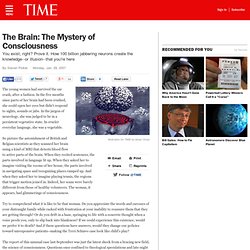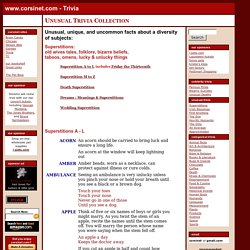

Quantum Weirdness. Copyright 2006/2007 James A.

Tabb Part 5: Entangled Particles Selecting which atom we use with careful attention to its excitation states can create entangled particles. Some atoms emit two photons at a time or very closely together, one in one direction, the other in the opposite direction. These photons also have a property that one spins or is polarized in one direction and the other always spins or is polarized at right angles to the first. Figure 10 – Entangled Particles All of this was involved in a famous dispute between Einstein and Bohr where Einstein devised a series of thought experiments to prove quantum measurement theory defective and Bohr devised answers.
Action-at-a-distance that occurs faster than the speed of light? So there you have it – Weird behavior at a distance, maybe across the universe. In Summary – Not So Weird After All Photons and other particles that travel at c have paths that are effectively zero length and time spans that are of zero duration.
James A. EPR paradox. Albert Einstein The EPR paradox is an early and influential critique leveled against the Copenhagen interpretation of quantum mechanics.

Albert Einstein and his colleagues Boris Podolsky and Nathan Rosen (known collectively as EPR) designed a thought experiment which revealed that the accepted formulation of quantum mechanics had a consequence which had not previously been noticed, but which looked unreasonable at the time. The scenario described involved the phenomenon that is now known as quantum entanglement. According to quantum mechanics, under some conditions, a pair of quantum systems may be described by a single wave function, which encodes the probabilities of the outcomes of experiments that may be performed on the two systems, whether jointly or individually. At the time the EPR article discussed below was written, it was known from experiments that the outcome of an experiment sometimes cannot be uniquely predicted. History of EPR developments[edit] Einstein's opposition[edit] Rhetological Fallacies. The Brain: The Mystery of Consciousness.
The young women had survived the car crash, after a fashion.

In the five months since parts of her brain had been crushed, she could open her eyes but didn't respond to sights, sounds or jabs. In the jargon of neurology, she was judged to be in a persistent vegetative state. In crueler everyday language, she was a vegetable. So picture the astonishment of British and Belgian scientists as they scanned her brain using a kind of MRI that detects blood flow to active parts of the brain. When they recited sentences, the parts involved in language lit up. Try to comprehend what it is like to be that woman. The report of this unusual case last September was just the latest shock from a bracing new field, the science of consciousness. It shouldn't be surprising that research on consciousness is alternately exhilarating and disturbing. To make scientific headway in a topic as tangled as consciousness, it helps to clear away some red herrings. The Logical Fallacies: Table of Contents.
Superstitions Old Wives Tales Beliefs & Misconceptions A-L. Superstitions: old wives tales, folklore, bizarre beliefs, taboos, omens, lucky & unlucky things Superstitions A - L recommended: Cassell's Dictionary of Superstitions 101 American Superstitions : Understanding Language and Culture through Superstitions Sheer Superstition: Outmaneuvering Fate Unexplained Mysteries of the 20th Century Dictionary of Omens and Superstitions Curious Customs and Bizarre Beliefs Around the World Why People Believe Weird Things: Pseudoscience, Superstition, and Other Confusions of Our Time.
